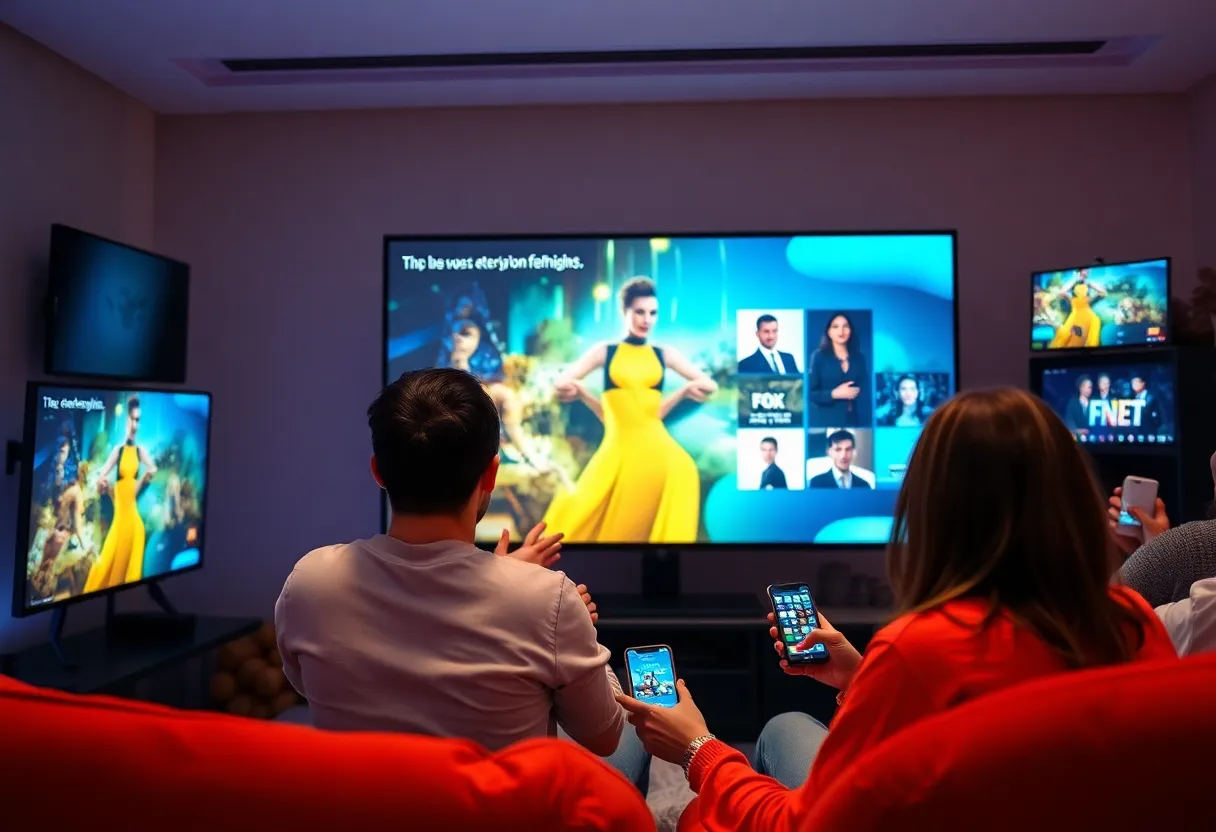News Summary
This article explores the significant shifts in the media landscape driven by streaming and social platforms. Consumers are spending more time on digital media while traditional pay TV subscriptions are declining. Advertisers are reallocating budgets towards social video platforms as viewers seek more engaging and cost-effective content. This trend suggests that the future of entertainment will heavily lean on the preferences of younger generations and the evolving needs for value.
The Changing Face of Media: How Streaming and Social Platforms Are Shaking Things Up
Have you noticed how much time you spend glued to your screens? On average, consumers are now dedicating a whopping six hours daily to media and entertainment. It seems unlikely that this figure will grow in the near future, partly because the competition for our attention is getting fiercer. Social platforms are not just for sharing cute cat videos anymore; they’ve become serious contenders in the media landscape.
Shifting Ad Dollars
With media and entertainment companies, including advertisers, scrambling over their slice of the advertising pie, the dynamics are shifting. Currently, half of the U.S. ad spending is moving away from traditional channels and heading straight toward social video platforms. These platforms offer a wide variety of free content and apply cutting-edge advertising technology, which makes them more attractive to viewers.
Decline of Pay TV
One of the most telling trends is the decline in pay TV subscriptions, which have dropped from 63% to 49% in recent years. This pattern reveals a clear shift in consumer preferences, with many audiences now opting for subscription-based video on demand (SVOD) services and social platforms. Interestingly, you’ll find that younger generations are particularly likely to ditch traditional cable subscriptions; around 23% of Generation Z and 18% of millennials are eyeing their cable bills with a critical eye for cancellation in the coming year. High costs are pushing them toward more budget-friendly SVOD services.
Consumers Reassess Their Spending
When you take into account the median household income of $80,000 in the U.S., many consumers are becoming more discerning with their spending. They seem to be prioritizing essential expenses over luxury ones like media subscriptions. Interestingly, as production and marketing expenses spiral upwards for studios, they are now looking at bundling strategies and collaborations to draw audiences in while trying to keep costs lower for consumers.
The Rise of Quality Content
Traditional studios are feeling more pressure than ever from SVOD services and social platforms, which consistently offer engaging content and captivating storytelling. Let’s face it, cable and satellite TV services have been losing their luster, and many subscribers express their discontent over hefty prices and abundant advertisements. The average cable bill now sits at around $125 per month, while you can enjoy four popular streaming services for just $69 combined. Quite the bargain, isn’t it?
Value of Content
Yet, there’s a twist; research shows that 41% of consumers no longer feel that the content value for SVOD services justifies the price tag. This figure has climbed by five percentage points since last year, indicating that people are reevaluating their subscriptions. Likewise, subscription churn rates for SVOD services are sitting high at 39%, which points to frequent cancellations among consumers.
Exploring Ad-Supported Options
With growing concerns and competitive pressures, streaming services are also broadening their horizons by offering ad-supported tiers as an attractive alternative. More than half of SVOD subscribers are now utilizing these options, showcasing a rise of eight percentage points from the previous year. This shift illustrates a general acceptance among viewers for ads in exchange for lower prices.
The Social Media Effect
The potency of social media ads is striking, especially for younger audiences such as Generation Z and millennials, who find these ads far more relevant than traditional media options. It’s fascinating to see how this demographic increasingly perceives social media content as more relevant than conventional mediums like television and film. Many also report receiving better recommendations for media content through social platforms compared to SVOD services.
Final Thoughts
As the competitive landscape evolves, traditional media companies are grappling with rising production costs and the urgent need to innovate. They’re facing a dual challenge: maintaining profitability while also delivering high-quality content that can stand tall against the agile nature of social platforms. It’s a captivating time in the world of media, and how consumers navigate these options will shape the future of entertainment for years to come.
Deeper Dive: News & Info About This Topic
HERE Resources
Exciting News for Digital Marketers: Zenith Digital Marketing Conference is Almost Here!
Exciting Changes Ahead: SEOST Digital Marketing Conference Coming to Chandler, Arizona!
Digital Marketing Trends Set to Transform Brand Engagement in 2025
Kobe Digital Expands into Miami, Establishing New Office
The Growing Landscape of Digital Marketing Costs for Businesses in 2025
Comcast NBCUniversal Ranked Among 100 Best Companies in 2023
Charleston Residents Concerned About Rising Living Costs
Florence County Embraces AI in Education
South Carolina Sets Vision for Manufacturing Growth by 2025
Investigation Launched Over Mysterious Closure of News Website
Additional Resources
- Deloitte: United States Economic Outlook Analysis
- Wikipedia: Social Media
- Deloitte: 2025 Digital Media Trends
- Google Search: Digital Media Trends
- Deloitte: Thriving in Leadership Tension and Uncertainty
- Encyclopedia Britannica: Streaming Media
- Deloitte: Closing the Experience Gap
- Google News: Streaming Services Competition








